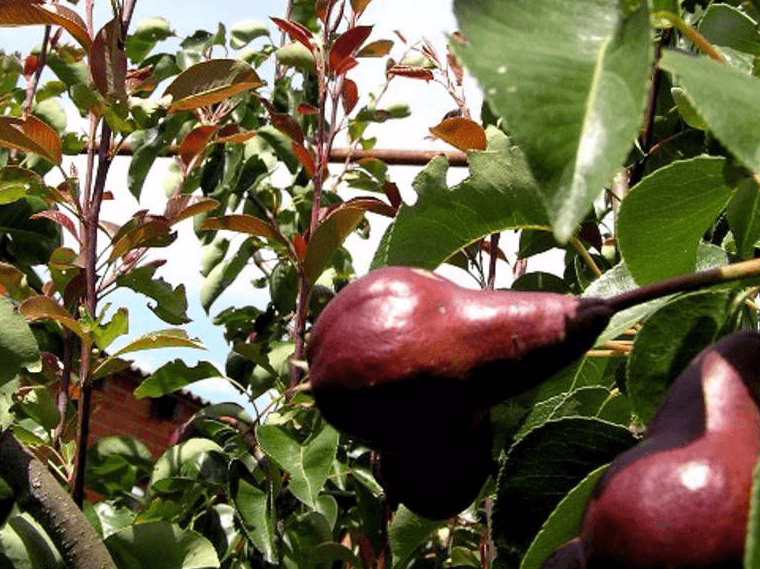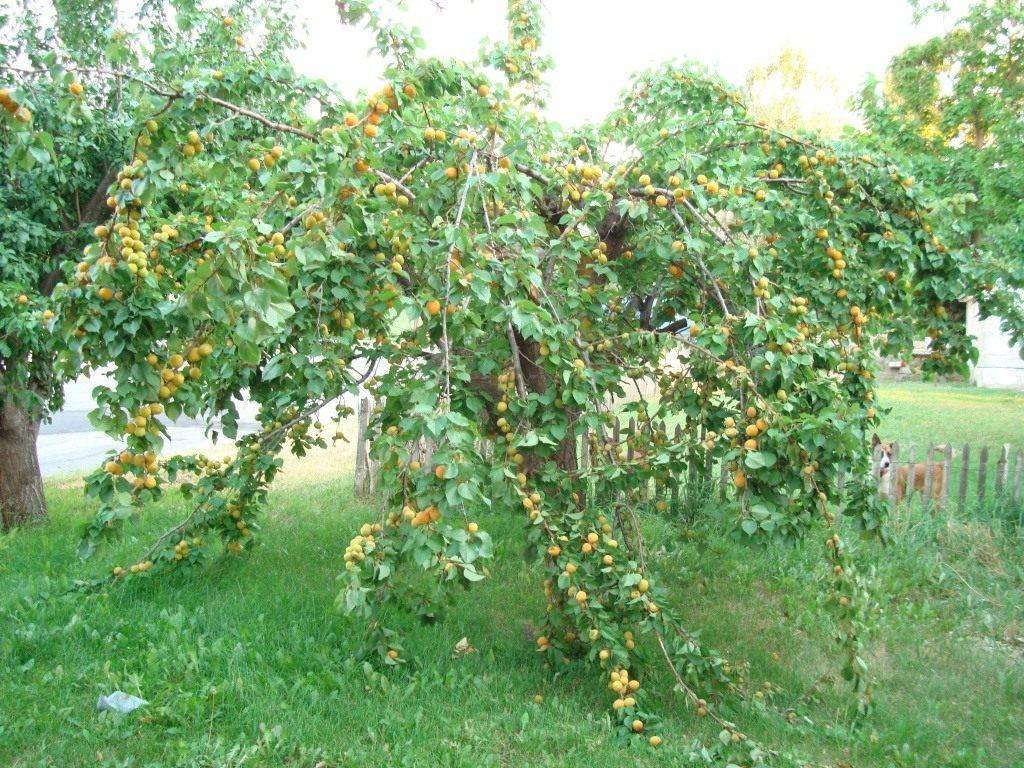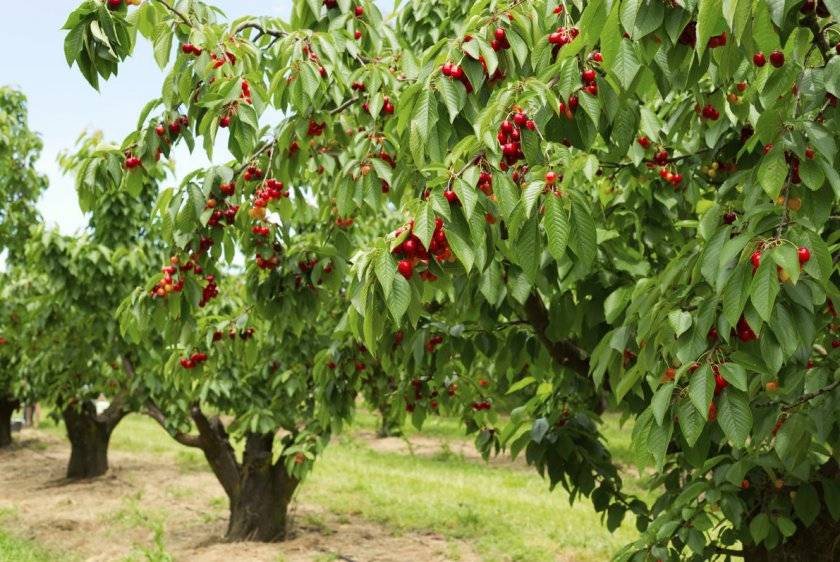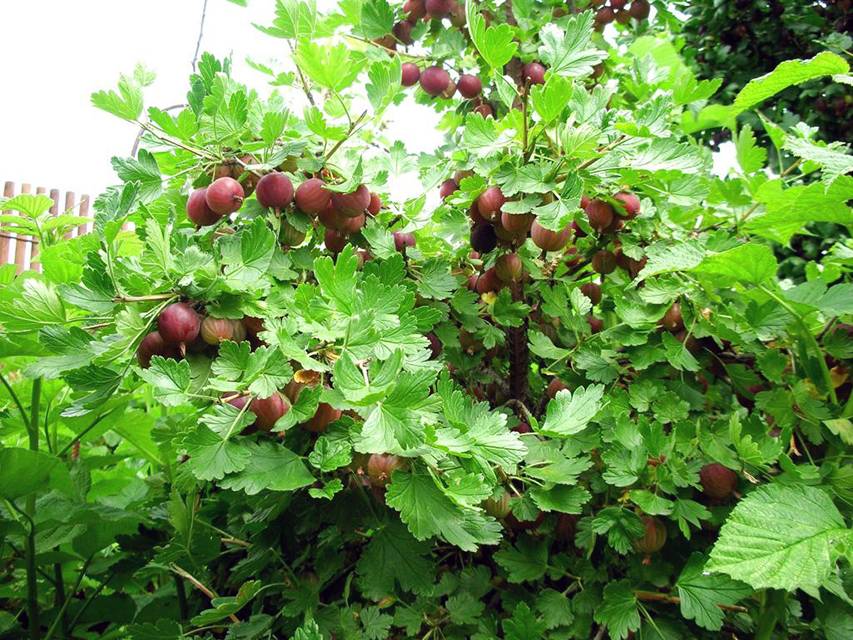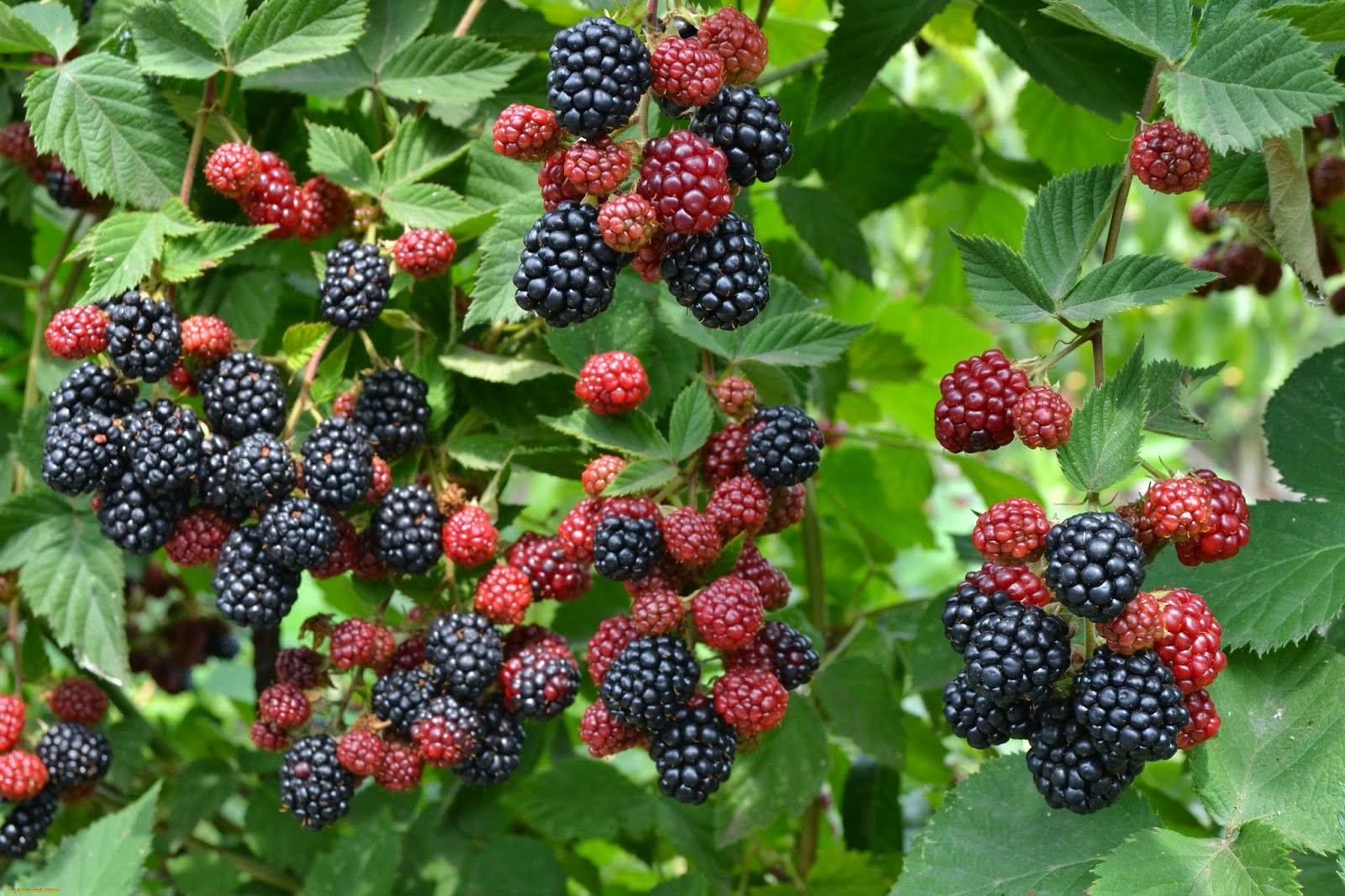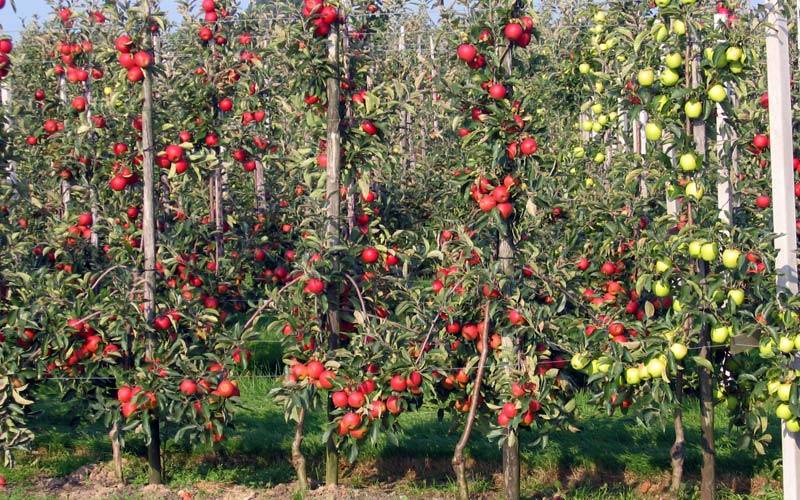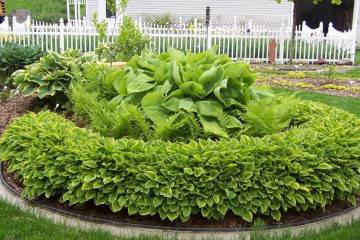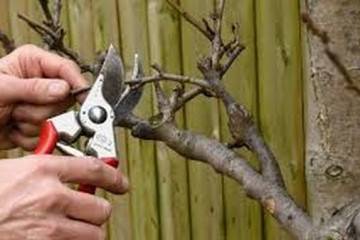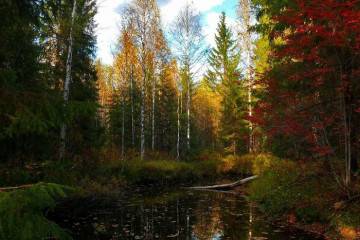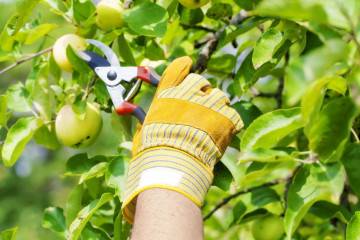Fruit trees and shrubs for the garden, columnar fruit trees
Content:
Almost every gardener grows berries and fruits on his site. There are a huge number of varieties and varieties of fruit trees and shrubs. Below are the most popular varieties, which are distinguished by their unpretentiousness and the formation of tasty fruits.
Fruit trees
The types and varieties of fruit and berry crops described below are widely popular due to their pleasant taste characteristics and the absence of difficulties in care.
Apple tree
Fruit trees can be found on almost every site. The abundance of varieties allows everyone to choose the most suitable variety. Among the best varieties of apple trees are:
- Antonovka Zolotoy is a summer variety, characterized by an oval-conical shape of edible fruits, from which a pronounced aroma emanates. Apples are colored in green-yellow shades, juicy pulp, harmonious taste. Fruit weight reaches 200-260 g. The first fruiting can be expected already in the third year after planting the seedlings. The variety has an average yield. If you need to plant a large number of seedlings, you should decide in advance on the scheme of their location;
- White filling is a variety of apple trees, which are distinguished by a particularly sweet taste and juiciness of the pulp. The fruits are naturally endowed with medium sizes. The variety is winter hardy. It is important to collect the fruits in a timely manner so that they do not lose their taste. Can be grown even in Siberia;
- Bogatyr is a winter variety characterized by large fruits that can be stored for a long time. The shape of the apples is flattened and rounded. The taste of the fruit is sweet and sour. The first fruiting should be expected for 5-6 years.
Pear
Pear is a representative of the Pink family, the fruits of which will impress even the most sophisticated gourmet. Among the most popular varieties are:
- Bryansk beauty is a late summer variety. The tree grows medium in size. Crohn sparse spherical. The mass of the elongated pear-shaped fruits reaches 210 g. The pulp of golden-yellow fruits is characterized by juiciness, tenderness and moderate density. The first crop can be harvested 5 years after planting the seedlings;
- Skorospelka from Michurinsk is a summer variety. The crown of a garden tree resembles a pyramid shape. The mass of fruits with rounded pear-shaped outlines does not exceed 80 g. The tenderness of the pulp and its juiciness are the undoubted advantages of the variety. Early ripening from Michurinsk tolerates winter cold. It can grow in almost any region of Russia;
- Irista is a pear, the crown of which resembles the shape of a reverse pyramid. The mass of fruits, colored in a rich green palette, reaches 150 g. The pulp of medium density is distinguished by its tenderness and juiciness.
Plum
Fruit trees that ripen in temperate latitudes. When choosing a variety of plums for planting in your own garden, you should give preference to:
- heroic plum, the fruits of which can reach 40 g. They are painted in a dark purple palette. The pulp is distinguished by tenderness and juiciness, sweet and sour taste. From each mature tree, you can harvest 65-80 kg of the crop.The variety does not need pollinators. The first crop can be harvested as early as 4 years after planting the seedlings;
- Volgograd variety. The mass of fruits, colored in a dark raspberry palette, reaches 40 g. Plums with orange fruits are quite juicy. The Volgograd variety belongs to drought and frost-resistant species of fruit trees. In the absence of proper care, the fruits will be small in size.
Peach
Peach is a member of the Pink family, the fruits of which are soft, juicy and tasty. Below you can find a list of the most popular types of peach.
- Redhaven is an early-ripening winter-hardy peach variety. The weight of each fruit exceeds 140 g. With proper care, the tree will not be susceptible to diseases and pests;
- The Kremlin species is an early ripe variety that is able to sustainably endure severe frosts. A culture can acclimate to a variety of climatic conditions. The fruits are colored yellow or orange. The weight of a peach does not exceed 120 g. It can be grown in the Middle lane.
Apricot
Apricots are fruit trees that are no less popular than apple and pear trees. The best plant species in this category are:
- Northern Triumph is an apricot variety that does not need a pollinator. After 3 years after planting the seedlings, the first crop can be harvested. The variety is not susceptible to disease. The mass of fruits, colored in yellow-orange shades, is in the range of 50-55 g;
- Alyosha is a type of fruit tree with a round crown. The fruits, colored in yellow-orange shades, are naturally endowed with a sweet and sour taste.
Berry trees
Fruit trees and shrubs are the main plantings of any garden plot. Those that bear berries are especially loved by agronomists.
Cherry
The best varieties of cherries today are such varieties as:
- Tamaris is a low-growing perennial, the crown of which is distinguished by its rounded shapes. The mass of each berry reaches 4 g. Tamari cherry, as it is also called in Russia, tolerates frost steadily. Cherries are juicy and sweetish;
- Zhivitsa is an early-ripening variety, a hybrid of cherry and sweet cherry. You can eat the first berries already 2-3 years after planting the seedlings. The gum does not need frequent pruning. The berries contain a minimum percentage of sugar;
- Novella is a medium-sized variety. The shape of the crown is round. The berries are colored maroon. The sweet and sour taste of cherries is pleasant to the taste. Novella is able to withstand winter frosts.
Sweet cherry
Below are the names of the most popular cherry varieties:
- Drogana yellow is a variety that blooms profusely in the spring. The mass of berries can reach 8 g. The fruits are rather sweet, but they do not tolerate transportation well. The tree begins to bear fruit at the 4th year of life. From an adult tree, you can remove 30-35 kg of the crop. It is recommended to plant trees at a distance of 4 m from buildings;
- Veda is a late type of sweet cherry, the berries of which are naturally endowed with dense heart-shaped outlines. The mass of berries is within 5.5 g. The most delicate pulp is hidden under the skin of a ruby hue;
- Bryansk pink is a late variety of sweet cherry. Rounded berries are painted in coral tones. The mass of each cherry is within 4.5 g. Early-growing trees are winter-hardy crops.
Features of the root system of fruit trees
The roots of fruit plants are endowed with specific features. For example, the root system of a young apple tree is able to lie at a depth of 55-60 cm, and the roots of a pear planted only are buried by 100-150 cm.
When thinking about which plants to plant near a fruit tree in the country, it is worth taking into account root competition and the possibility of a free approach to plants for harvesting. That is why gardeners recommend planting annuals and ground cover plants near fruit crops.
Fruit shrubs
Often, fruit shrubs are used not only to obtain fruits, but also to create a hedge. Fruit and berry bushes will not only effectively decorate the site, but also delight you with a tasty and healthy harvest.
Below are described berry bushes, which are most often planted by gardeners on their site.
Currant
Currant is a shrub with edible berries. Among the most popular varieties of berry bushes, gardeners distinguish:
- A curiosity - an early variety. Medium bushes are slightly spreading. The curiosity needs abundant watering. Bushes often die from drought. A variety of berry bush has a high yield. The weight of the berries reaches 2 g;
- Selechenskaya. You can eat berries already in the middle of summer. This type of culture belongs to the category of winter-hardy, drought-resistant, high-yielding plants. Vigorous upright bushes do not need tying. Large sweet berries are painted in black tones;
- Exotic is a universal variety, the fruits of which are naturally endowed with a large size. The frost-resistant variety is not susceptible to diseases and pests.
Which variety to choose to plant in your garden is up to everyone to decide individually.
Gooseberry
Gooseberry is a member of the Gooseberry family, the large fruits of which are endowed with a sweet and sour aftertaste. Most often, gardeners prefer gooseberry varieties such as:
- Gingerbread man is a medium-sized berry shrub. Fruit weight is within 7 g. Pale red berries with pleasant taste characteristics, effectively combining sweetness and sourness;
- Defender. The weight of oval-pear-shaped berries, which are considered large-sized, is within 10 g. This gooseberry variety tolerates frost and is not susceptible to diseases;
- Cooperator. A fruit shrub for a garden of this species pleases with a high yield. Each bush can be harvested about 5.5 kg. Dessert fruits are distinguished by their tenderness and sweet taste.
What shrubs to grow in the shade
In the shade, gardeners recommend planting raspberries and blackberries, which are suitable for a place in partial shade.
Raspberries
When choosing raspberry varieties, you should pay attention to the types of shrubs, which are listed below:
- Arbat is a large-fruited medium-early variety of raspberries. The mass of elongated berries, colored in red tones, reaches 17-19 g. 7-9 kg of harvest is removed from each bush per season. Dense berries are able to maintain their presentation even after prolonged transportation. Can be grown in the shade;
- Brigantine is a shrub variety of raspberries, the size of which is compact. Erect shoots have a small number of thorns. The main advantages of Brigantine are considered to be a high level of yield and resistance to diseases. It is recommended to purchase seedlings from the nursery;
- The Bryansk miracle rejoices gardeners with long-term fruiting. You can enjoy berries until mid-autumn. You can plant bushes in the garden near the hedge. Having provided the plants with proper care, it is easy to achieve the formation of large berries, the weight of which reaches 20 g.
Blackberry
The varieties of blackberries presented below will bear fruit abundantly and delight the owner of the site with a weighty harvest:
- Doyle is bushes that don't have thorns. The variety is distinguished by the formation of large berries.Blackberries are quite juicy and sweet in taste. The berry weight is 7 g. The variety is resistant to the dry period and is not susceptible to diseases. Suitable for planting in the Moscow region;
- Ruben is a fruitful blackberry that grows vertically. The height of compact bushes can exceed 180 cm. The mass of elongated sweet berries does not exceed 11 g. Gardeners recommend planting bushes along the fence. Blackberries endure long transportation. Suitable for planting in the southern lane.
Columnar trees
The unusual appearance of columnar plants is considered the highlight of this type of culture. During the fruiting period, the seedlings resemble a column. The taste characteristics of the fruits are no different from those harvested from ordinary fruit trees.
Columnar trees: features and disadvantages
The columnar fruit tree is in demand among gardeners due to its high profitability. Ease of caring for dwarf plantations is combined with high yields, which pleases the columnar culture.
Among the main advantages of the species are:
- small size of the crown and root system, which makes it possible to plant greenery even on small areas;
- no need to maintain large gaps between trees when planting;
- ease of caring for a low tree;
- no need for volumetric pruning;
- the ability to plant columnar crops near buildings.
The main disadvantage of columnar trees is the short growing period. Trees will delight with fruiting with proper care for only 10-13 years.
How to plant columnar trees
Dwarf trees are planted in early autumn, so that the seedling has time to acclimatize before the onset of frost. If you wish, you can postpone planting work until April. When choosing a landing site, preference should be given to well-lit areas that are protected from gusty winds and drafts.
Mineral fertilizer is applied to the soil, after which the root system of the plant is lowered into the pit. The resulting voids are covered with a layer of earth. When planting, it is important that:
- the rhizome was straightened;
- the root collar was above the soil surface.
How to care for columnar trees
In order for the culture to please with abundant fruiting, it is required to properly care for the garden plant:
- moisten the soil in a timely manner. It is important not to allow the topsoil to dry out too much;
- apply mineral and organic fertilizers;
- weed and mulch the soil. Weeding is carried out very carefully, since the root system of the plants located at the top is easily damaged. Hulls, peat, a layer of sawdust or straw can be used as mulch;
- tear off the inflorescences that form in the first year after planting, so that the tree directs its forces to strengthen the root system;
- carrying out annual pruning, which allows you to form a beautiful crown;
- prepare the plant for winter. Having wrapped the seedlings with a layer of spandbond, the extreme parts of which are fixed with bricks, the area of the trunk circle should be covered with a large layer of spruce branches.
The abundance of species and varieties of fruit trees and shrubs allows each gardener to choose the most suitable option for himself, which will delight not only with an attractive appearance, but also with a bountiful harvest.
